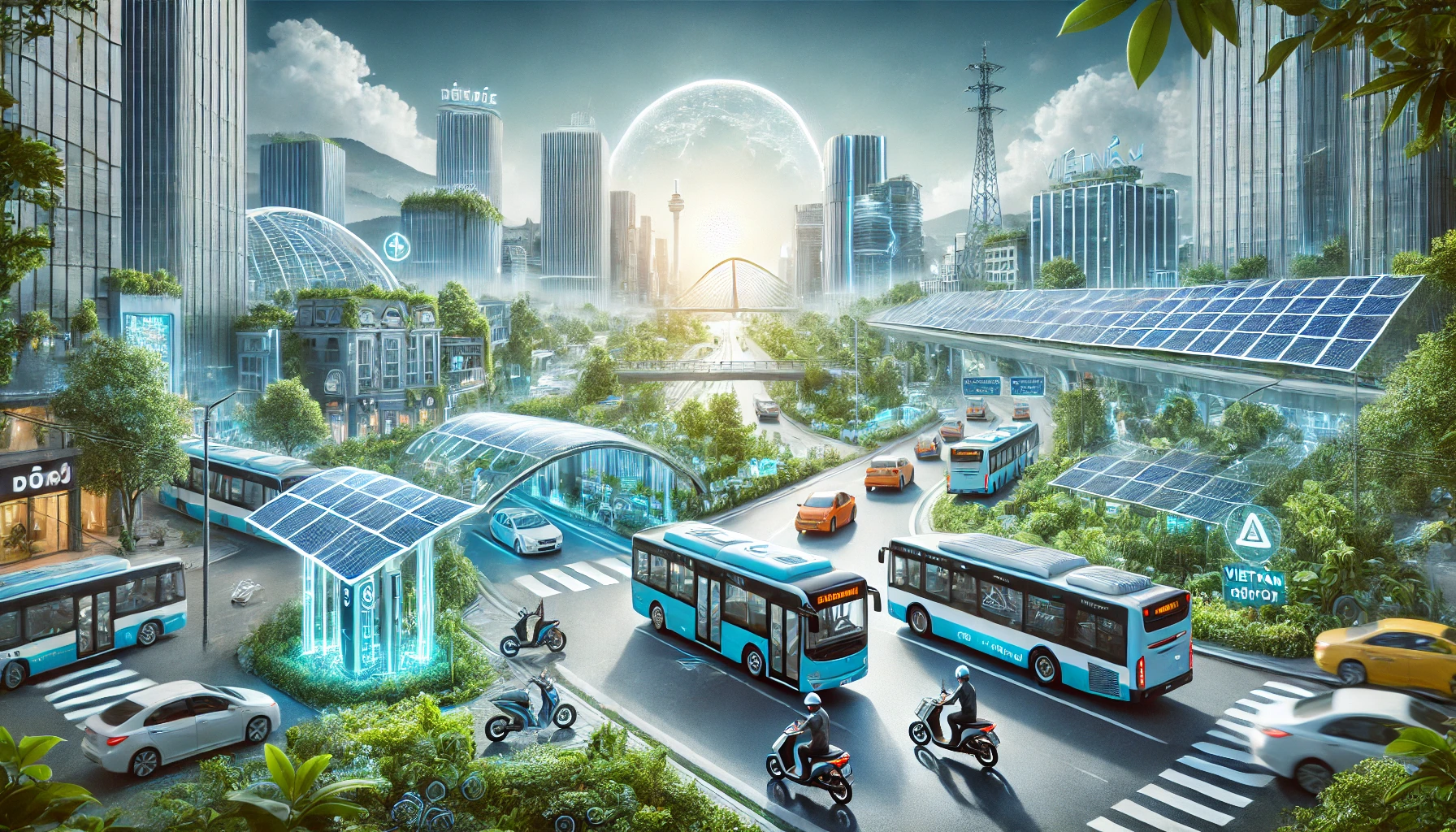Sustainable Transport: Vietnam’s Plan to Electrify Roads and Cut Emissions by 2050
The World Bank's roadmap for Vietnam's electric mobility transition outlines ambitious goals for full vehicle electrification by 2050, emphasizing the critical role of two-wheelers, public buses, and passenger cars. This shift promises significant economic savings, emission reductions, and job creation, requiring coordinated governance and strategic investments in infrastructure and policy.

The World Bank, in collaboration with experts in transport and energy systems, has laid out a visionary roadmap for Vietnam's transition to electric mobility, as outlined in Decision 876/QD-TTg. This ambitious framework aligns with the nation’s Paris Agreement commitments and its pledge to achieve net-zero emissions by 2050. The plan aims to electrify 50% of urban vehicles and 100% of buses and taxis by 2030, progressing to full electrification of all road vehicles by 2050. This transformation requires a multi-sectoral approach, integrating electric vehicle (EV) adoption, power grid readiness, and extensive charging infrastructure development. With motorcycles dominating Vietnam’s roads, the report emphasizes a staged transition beginning with two-wheelers (E-2Ws) and scaling to passenger cars, buses, and commercial vehicles.
Two-Wheelers Lead the Charge
Vietnam is poised for rapid E-2W adoption, with the segment already accounting for 12% of the market—the second highest globally after China. The report highlights the strong foundation for scaling adoption, supported by a diverse supplier base and increasing consumer acceptance. E-2Ws are particularly suited for urban commuting, where their range and affordability make them an attractive alternative to internal combustion engine (ICE) motorcycles. However, challenges such as higher upfront costs and battery safety concerns persist. To address these, the report recommends targeted policies, including subsidies, robust manufacturing standards, and an expanded charging infrastructure. Achieving rapid electrification in this segment could lead to significant reductions in urban emissions while paving the way for broader EV adoption.
Passenger Cars: An Opportunity to Leapfrog
In the passenger car segment, Vietnam has an unprecedented opportunity to leapfrog directly into widespread EV adoption, bypassing the ICE-dominated motorization phase typical of middle-income countries. While car ownership remains relatively low, companies like VinFast are driving the transition with competitive electric passenger cars (E-PCs) that rival ICE vehicles in cost and performance. Current models offer lower total ownership costs due to reduced fuel and maintenance expenses, bolstered by long-term battery warranties. However, limited charging infrastructure is a key barrier. Early investment in urban charging networks is critical to encourage adoption among wealthier consumers, with expansions into rural and inter-city areas slated for post-2030. By 2050, E-PCs could dominate Vietnam’s passenger car market, marking a transformative shift in personal transportation.
Electrifying Public Transit for Sustainable Urban Mobility
Public buses represent a critical pillar of Vietnam’s electric mobility strategy, offering substantial opportunities for emission reductions and improved air quality. The current fleet, primarily diesel-powered, is aging and due for replacement, making it an ideal candidate for electrification. Pilot projects in Hanoi and Ho Chi Minh City have demonstrated the potential of battery electric buses (E-Buses), which have outperformed diesel counterparts in passenger satisfaction and ridership. However, the high upfront cost of E-Buses remains a barrier, despite their lower long-term operating costs. The report advocates for financial mechanisms to reduce acquisition costs and improve operational efficiency, including fleet consolidation and performance-based contracting. Expanding public transit services while transitioning to E-Buses could significantly improve urban mobility and environmental outcomes.
Commercial Vehicles: Addressing Emissions from Freight and Logistics
Vietnam’s reliance on smaller trucks and minibusses presents an early opportunity for electrification within the commercial vehicle sector. While heavy-duty trucks and large buses face technological and cost challenges, smaller vehicles are better positioned for battery-electric technology. The report emphasizes the need for dedicated industrial policies to encourage localized production of electric trucks and minibuses, alongside the development of a nationwide fast-charging network. Freight corridors and inter-city passenger routes should be prioritized to support commercial vehicle electrification. However, the transition alone will not suffice. Complementary measures such as shifting freight transport to railways and waterways and enforcing stricter fuel economy standards are essential to achieving substantial decarbonization in this sector.
Managing the Power Sector for an Electrified Future
The growing adoption of EVs will place significant demands on Vietnam’s power sector. While the impact on electricity generation is expected to remain manageable until 2035, it will increase sharply after that, requiring up to 25% additional grid capacity by 2050. The report underscores the importance of grid efficiency, renewable energy expansion, and off-peak charging strategies to mitigate this demand. Investments in rooftop solar at charging facilities, smart chargers, and electricity tariff reforms are key to managing load and ensuring stability. Additionally, promoting modal shifts from private vehicles to public transit and from trucks to railways and waterways can reduce overall energy consumption and alleviate pressure on the grid.
Economic and Environmental Gains Await
Vietnam’s transition to electric mobility promises significant economic and environmental benefits. By reducing reliance on petroleum imports, the country could save up to 498 billion dollars by 2050. The shift is projected to create up to 6.5 million jobs in manufacturing, maintenance, and related sectors. Electrification is also expected to reduce local air pollution costs by 30 million dollars by 2030 and 6.4 billion dollars by mid-century, improving public health and urban livability. However, achieving these outcomes requires coordinated governance, significant investment, and effective public-private partnerships. The World Bank emphasizes the establishment of cross-sectoral committees to streamline efforts and ensure alignment between ministries, industry stakeholders, and local governments. Vietnam’s success could serve as a global model for other developing nations, showcasing how ambitious climate goals can drive sustainable growth and economic transformation.
- FIRST PUBLISHED IN:
- Devdiscourse










